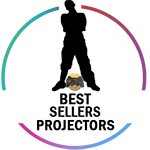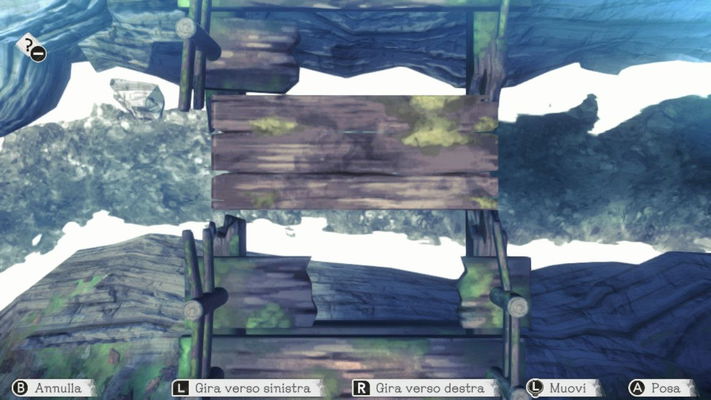Another code: memory | Review – A journey into the past

Another code: memory It was a comeback we never expected. We have told you in detail about this series in a special specialwhich you can read to learn more about the history of these titles and the development studio behind them.
In summary, Another code is a (so far) two-episode series from the Cing studio, which went bankrupt in 2010, and was released for Wii and DS. Also, the fact that it was never fully resolved contributed to the series' return unexpectedly. Who owned the rights to these games and what happened to them after Cing disbanded?
The answer came a few months ago: Nintendo held the rights to the series and is now ready to do so Suggest it again in a single package as Another code: memoryavailable exclusively from January 19th Nintendo Switch. Let's find out together how this return went.
trip to the past
As we expected at the beginning, Another code: memory (which you can already find on Amazon) Contains both episodes that make up the seriesthat means Another code: two memoriesoriginally released on DS in 2005, and Another Code: R – A journey into lost memoriesReleased on Wii in 2009.
The story of the first game begins with protagonist Ashley Mizuki Robbins on her fourteenth birthday. Afterwards, Ashley was raised by her aunt Jessica, her father's sister Her parents disappeared when she was littleand she was thought to be dead the whole time.
We say “presumed dead” because it was his fourteenth birthday Ashley receives a letter from her fatherwho says he is waiting for her on a remote island called Blood Edward Island.
At this point, the girl and her Aunt Jessica take a ferry to reach the island. However, when she arrives, no one is waiting for her. Jessica sets out to find Ashley's father, but when the girl doesn't see her return, she decides to track him down. This will soon lead them to meet that Ghost of a boy who has lost his memorieswho simply calls himself D and becomes his adventure companion as he explores the mysterious villa on Bloody Edward Island.
We don't want to tell you the story any further, also because, since it is a kind of mystery for children, we would risk ruining many plot twists.
Also, We don't want to tell you anything about the second episode yetbecause it would obviously mean ruining at least part of the entire experience of the first chapter, because the sequel begins exactly with the events at the end of Two memories.
These are two graphic adventures in one well written, which can be very juvenile in a way (understandable given the age of the protagonist), but still entertaining. Compared to the original games Some dialogue was added and others were rewrittenand in general the translation seems more faithful to the Japanese original, which is particularly evident in Two memories.
Estheticthe games were quite rebuilt from scratch, attempting to retain the artistic vision of the original titles. It is clear that we are dealing with a production made on a limited budget – an understandable choice considering that it is a niche genre and a previously unknown series – but the character models and settings are well done and can at least disguise to some extent the weaknesses of this remake.
The box contains two games that are properly adapted for the Switch, as they come from the DS and Wii.
The soundtrack is also very good, with adaptations of the pieces featured in the original games. The graphic adventures of the Cing studio have always included excellent titles that sought to create a certain atmosphere, and with this remake they can finally be enjoyed without the limitations of audio playback of old hardware (again we are referring to in particular). Two memories).
The games are also included for the first time fully synchronized: Unfortunately There is no Italian dubbingbut you can still listen to the English dub and put i Subtitles in Italianwhich is a more than acceptable compromise given the titles we're talking about.
Puzzles from the past
As I said, the two titles of Another code: memory These are graphic adventures that do not represent any particular innovations for the genre. As Ashley, you can explore the environments, analyze objects, talk to the characters, combine tools, solve environmental puzzles, and so on.
In short, there is little to say about this at a structural level Another code: memoryassuming that's what it's about a classic graphic adventurewithout too many bells and whistles that does its job efficiently but without surprises.
Rather, we find it interesting to focus on it Novelty of this adaptation. First, The games have been made more similar to each other: originally actually Two memories It was a point and click with a view from above while R suggested a more classic 3D graphics adventure.
Here too, of course, we have another 3D graphics adventure, but The view has been completely changedand is now placed behind Ashley. This will allow you to better admire the magnificent game environments and analyze all the details immediately.
In view of this positive change, we also have to say that we have found this Camera a little too close to Ashley, in some situations even almost annoying. Unfortunately, there is no way to change this setting, but do yourself a favor and immediately increase the camera movement speed, which is very slow by default.
Even the puzzles had to be revised, as many of them involved the use of features exclusive to the DS and Wii. In general the The solutions found by the developers workand even if the element of surprise of the original titles were lost, a better result would have been hard to imagine, considering that certain elements (such as the microphone and the dual screen) are simply no longer available.
However, the developers have tried to take advantage of the features of the Switch (of which you can find the excellent Oled version). on Amazon), but it's clear that this is a completely different platform than the Wii and DS.
Back to the games: The two adventures are linearSo Don't expect multiple selections Throughout the story, you can't make any mistakes, so your progress depends only on how quickly you solve the puzzles.
In this regard, the games have implemented one Practical help system for beginners: You can activate hints simply by pressing a button. At first you will be given general clues, but if necessary you will practically be given the solution to the puzzles.
It may seem redundant since there aren't any particularly complex puzzles in the game, but since it's an optional mechanic, it's a good move from an accessibility perspective.
The two adventures are linear: don't expect any crossovers or multiple choices.
As for them Length of time, Two memories It's really very short, and that can be it completed in about 5 hours; The matter is different Rthe duration of which varies about 18 hours.
In total, We really appreciated this package. Despite the limited budget, we did not expect such work for a series that has now been practically forgotten and will certainly have a limited audience due to its genre.
Beyond a few minor problems, we face them two more than good graphic adventureswhich may not be immortal masterpieces of the genre, but still deserve a place in every aficionado's collection. We hope this is just a first step towards a real revival from IP Cing, which would finally bring the stories of Another code (for which a third episode was planned) and by Hotel Twilight.
We'll see: for now, let's just enjoy this return that has amazed us for various reasons.






